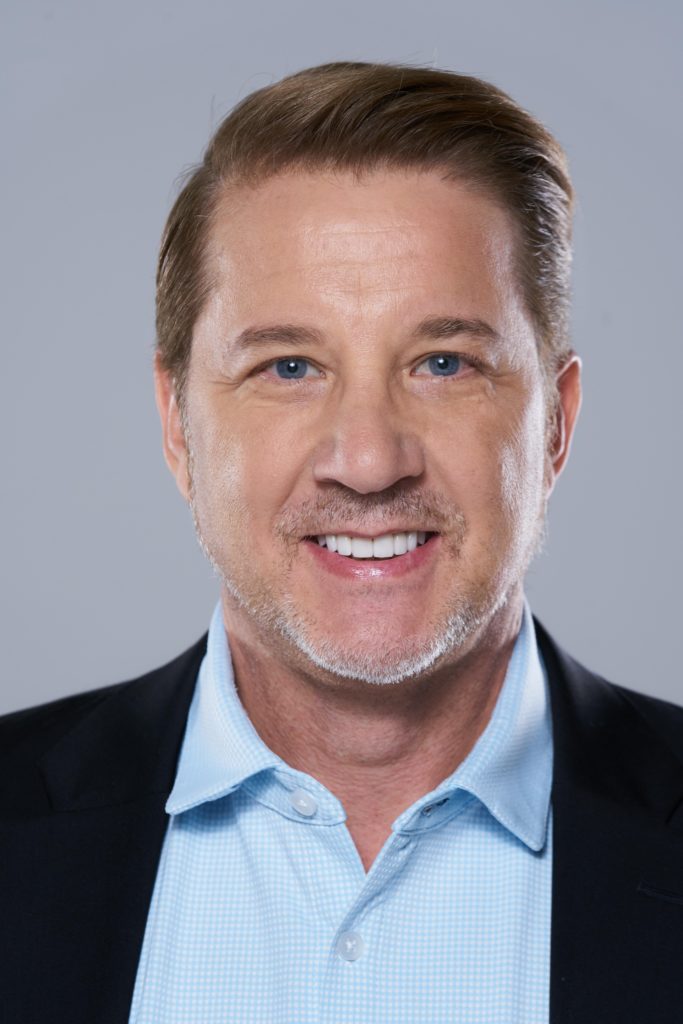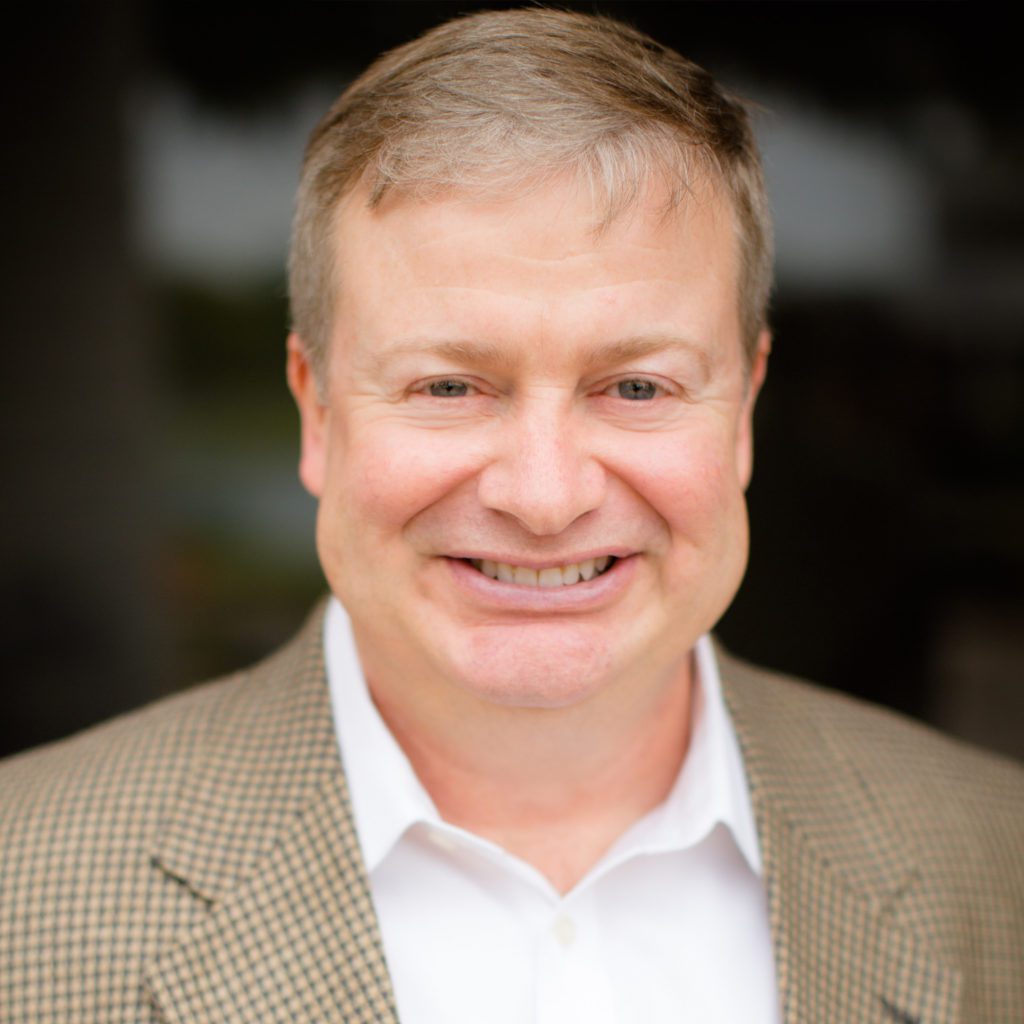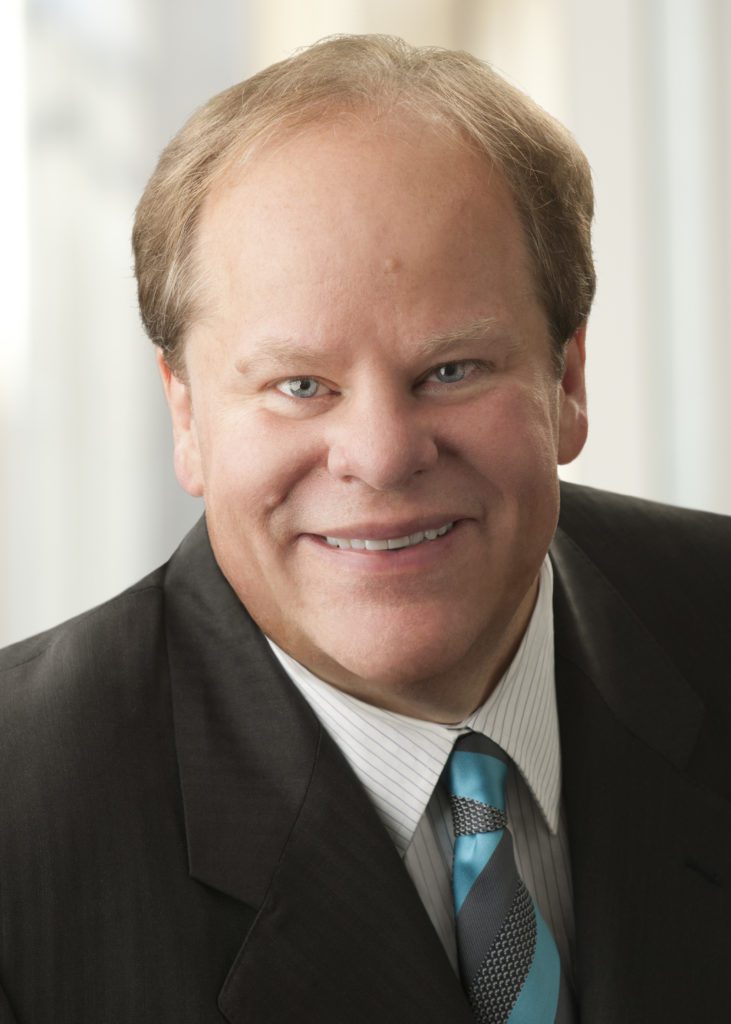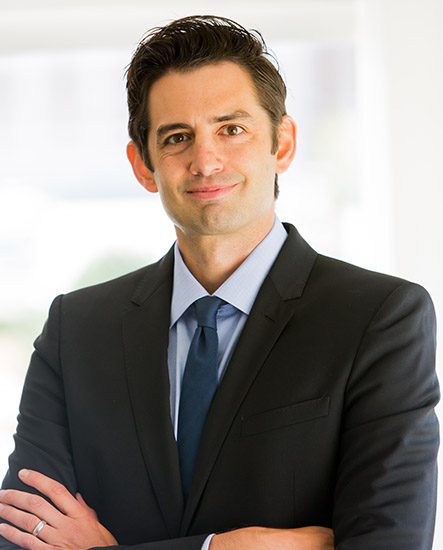Sitting At The Center Of The Company’s Data Flow


LivePerson’s John Collins is not your traditional finance chief. Prior to becoming CFO in early 2020, he led the development of the global technology company’s deployment of automated systems and the use of predictive analytics to support strategic decision-making. His mandate as CFO was to reduce costs and further enhance decision quality. Collins hit the ground running.
In just two years, he has guided the automation of the pipeline analytics used by the sales organization, deployed a dashboard that systematically analyzes dozens of key performance indicators and other metrics to produce prescribed actions, and put in place an array of probabilistic algorithms assisting everyone across the enterprise to make better decisions.
In overseeing data and analytics at the public company, a developer of conversational commerce and AI software, with more than 1,750 employees and 2021 revenues of $469.6 million, Collins controls the capture of traditional financial data as well as emails, text messages, phone calls and calendar events scheduled by salespeople with customers. “An extraordinarily rich set of information flows through the finance function and into the algorithms, giving the team insights that we then pass on to the other parts of the business,” said Collins.

With finance in charge of data and analytics, a sales rep no longer needs to record and transcribe a conversation with a major customer, much less use an external analytics solution to tease out pertinent insights that may guide a possible upselling opportunity.
“Since finance systematically `sees’ every customer interaction across products, markets, demographics and so on, we’re best equipped to surface trends from the data that are relevant for sales and other parts of the business,” said Collins, whose wide-ranging professional experience includes a three-year stint at the New York Stock Exchange, where he helped build an automated equity surveillance system to detect suspicious trading.
For LivePerson’s finance organization to understand the meaning of the comprehensive data they “see” (as opposed to just reporting the numbers), their skill sets have expanded well beyond traditional finance and accounting competencies.
“We have between 10 and 12 people on the team who are data scientists and data engineers, in addition to having the usual finance, planning and accounting certifications,” said Collins. “We’ve just found it highly optimal and efficient for us to be the ones here that write the algorithms.”
None of what Collins is doing as a strategic CFO was common until recently. “Five years ago, you wouldn’t see data scientists and data engineers employed in the finance organization doing the analytics, and here we are today, and it is increasingly pervasive,” said Jim O’Connor, Global Finance Advisory Leader at The Hackett Group.
Other public companies like Dun & Bradstreet, Thryv, Lincoln Financial and many others are entrusting their CFOs to oversee the analysis of huge and rapidly increasing volumes of structured and unstructured data, modeling a wide range of business scenarios for decision-making needs across the enterprise. “Leading companies have tasked the finance organization with guiding the enterprise analytics,” O’Connor said.
The Hackett Group’s 2022 CFO Key Issues study posits a burgeoning trend in the breadth and scope of finance organizations. According to the annual survey, the top four priorities for CFOs are: to invest in and accelerate finance digital transformation; serve as a strategic advisor to the business; secure finance data and turn this information into insights; and upskill finance talent by enhancing the team’s digital skills. Three of the four priorities involve data and analytics. By contrast, the 10th priority was enhancing control and compliance capabilities.
“An eye-opening 86 percent of finance functions have launched an initiative to improve their analytical, modeling and reporting capabilities, with finance expected to provide faster insights into workforce management changes, supply chain issues, procurement and even sales,” said Shawn Fitzgerald, a Senior Research Director in the firm’s Finance Advisory Practice.
“Well over 50 percent of the companies surveyed consider their CFOs as the broker of information in the middle of things,” he said. “It is increasingly apparent that a strategic CFO is the right person to lead the scenario modeling. Whereas finance used to be the scorekeeper on the sidelines, they’re the player-coach calling the plays.”
It’s an apt analogy. The scrutiny of wide-ranging data by finance and accounting professionals, whose traditional responsibility is to gather and validate the accuracy of numbers expressed in the financial reports, enhances the quality of data before the metrics are analyzed using machine learning algorithms.
“In the rush to data democratization, where people in different functions are using data and analytics desktop tools on a real-time self-service basis, you want to be sure the data they’re leveraging is accurate,” said Mike Polaha, Senior Vice President of Finance Solutions and Technology at BlackLine. “Otherwise, these so-called `citizen data scientists’ are merely informing bad decisions quicker.”

Having previously served as Johnson & Johnson’s Senior Vice President of Finance Solutions and Technology, Polaha joined BlackLine, a provider of automation solutions for finance and accounting, in October 2021. He equated the risk of unknowingly propagating bad data to the dissemination of “fake news”—misleading information disguised as credible news.
“While the promise of self-service analytics and data science is no doubt a competitive differentiator, it’s imperative that the data used in the analytics is fit for purpose,” he said. “Otherwise, incorrect misinterpretations and misrepresentations of the data can lead to suboptimal decisions.”
To be “fit for purpose” requires the finance organization to implement automated processes, technology and systems ensuring that data is current, accurate, harmonized and “of some value” for decision-making, he said. “All transactions that are automatable need to be automated, eliminating manual processes that tend to slow down the gathering of real-time data and gum up the analytics.”
Gumming up the analytics is not in store at Thryv Holdings, a subscription-based business management platform for 400,000 companies with two to 50 employees. Housed within Thryv’s financial planning and analysis (FP&A) team is a data and analytics group that makes sure there are no competing versions of the truth.

“They’ll go into the bowels of the business to pull out data on things like our customer churn, accounts receivables and product profitability, and then model the possible reasons why the figures are up or down,” said Paul Rouse, CFO at the public company with $1.1 billion in 2021 revenue.
In doing their modeling, the team uses a cloud-based analytics tool from Adaptive Insights. Rouse provided the example of acquisition due diligence. “Data on different acquisition candidates is selectively pulled together to model their respective fit and potential, ultimately taking the guesswork out of the transaction,” he said.
At 116-year-old Lincoln Financial, a holding company comprising multiple insurance and investment management businesses, Randy Freitag’s remit is similar but more challenging in some ways. The CFO is overseeing the migration of financial data from decades-old legacy administration systems to a new automated system that collects and analyzes data in real-time, a process that is not for the fainthearted. The company has more than 17 million customers, 11,000 employees and generated $19 billion in 2021 revenues.
“We’ve got these `big iron’ mainframe systems written in programming languages by people who long ago retired,” said Freitag. “If we have a question about a number in a ledger, it’s a multi-day process involving several people to unwind the data flows and find the answer.”

The answer will soon be available in seconds, thanks to a business intelligence and analytics software tool provided and customized by Tableau. This year, the analytics engine, branded as Life IQ, will be used first in the company’s life insurance business, followed by its annuity, retirement and group life insurance businesses, each with similar brands like Annuity HQ.
The finance shop also is in the middle of a two-year partnership with the Society of Actuaries to upskill 300 actuaries in the use of predictive analytics and data visualization tools. Within the organization is a Chief Valuation Actuary, who oversees a large group of actuaries who graduated from the upskilling program. “They’re using Tableau and a machine learning platform (from Dataiku) in valuing our liabilities, an amazing advancement,” Freitag said.
Like others, Freitag believes that data and analytics should reside inside the finance function. “At the end of the day, everything ends up in the financial statements, making the finance organization the right place to do the analytics,” he said. “We’re making big investments to fuel the development of insights that make work more efficient and avoid and mitigate risks.”
Something similar is at play at the equally venerable Dun & Bradstreet, founded in 1841 and still one of the world’s largest providers of business insights. D&B tallies around 6,000 employees and approximately $2.2 billion in 2020 revenues.
CFO Bryan Hipsher said his finance and accounting organization has become a “laboratory for innovative data and analytics, making us a modern finance organization. We began with the digitization of our data as the first step, which is fast evolving into the instrumentation for the analytics.”

The team approaches data and analytics as part-offense and part-defense, he said, defining defense as traditional finance and third-party risk management like accounting, sourcing, procurement and so on, and offense as sales and marketing. The team leverages the same data and analytics solutions that D&B sells to its customers, with a bonus.
“For example, a data set on outstanding receivables coming in from our customers in the Fortune 500 gives us the opportunity to analyze the payment behaviors between these clients and their customers, in addition to the payment behaviors they have with us,”
Hipsher said, noting that D&B’s analytics scour more than 460 million records altogether.
Using an AI analytics platform provided by Google Cloud, the finance team can write algorithms to detect unusual patterns and other anomalies in the payment data that may indicate a looming issue. “A customer that may be current with us at 30 days net may be at 90 days with other providers, alerting us to a possible problem ahead,” Hipsher said.
Forewarned of this risk, D&B’s finance organization can proactively reach out to the customer to discuss the situation. Since new data is constantly being produced, the finance organization has taken a supply chain approach to managing the inexorable flow. “We see data as a raw material like a traditional supply chain, where we ingest this raw material, curate it and analyze it, and then provide the insights across the enterprise,” he said.
LivePerson also pursues a data supply chain management approach. “As CFO, I sit at the center of the company’s data flow,” said Collins. “I’m essentially tasked with transforming a raw material, which happens to be data, which needs to be cleaned, normalized, accessible to systems, and useful to my organization and other functions like HR and sales for decision-making. We’re the ones in a proactive position to provide the data-driven insights to our colleagues.”
Collins does not see this role as all that different from what finance has performed historically. “The CFO of yesteryear fundamentally made measurements used to reduce uncertainty with respect to costs, risks, revenues and opportunities to generate long-term value creation,” he explained. “We do that now, albeit with data scientists and engineers. Thanks to modern finance and accounting automated solutions, we no longer do the manual grunt work.”
He provided the example of variance analysis, a common accounting practice involving a comparison between predicted and actual outcomes. “The FP&A team used to look at all the rows from the prior period and from the current period in spreadsheets, calculating the difference, for example, in the revenue performance of a particular business unit,” he said. “Not only was this process extremely manual and time-consuming, it provided little in the way of insights.”
In their variance analysis work today, the FP&A team uses an automated anomaly detection system, which was built internally by the finance organization’s data scientists and data engineers. Using a time series of statistics to detect deviations from expectations on a line-item basis, the tool instantly ranks each business unit’s performance. “Instead of chasing data and dumping it into a spreadsheet, the FP&A team can apply their financial expertise and judgment to analyzing the reasons for the variances and what can be done to improve outcomes,” the CFO said. “This frees us up to be more creative in our strategic work, looking around the corner at what might be coming up, then providing these insights across the company.”

Chief Executive Group exists to improve the performance of U.S. CEOs, senior executives and public-company directors, helping you grow your companies, build your communities and strengthen society. Learn more at chiefexecutivegroup.com.
0

1:00 - 5:00 pm
Over 70% of Executives Surveyed Agree: Many Strategic Planning Efforts Lack Systematic Approach Tips for Enhancing Your Strategic Planning Process
Executives expressed frustration with their current strategic planning process. Issues include:
Steve Rutan and Denise Harrison have put together an afternoon workshop that will provide the tools you need to address these concerns. They have worked with hundreds of executives to develop a systematic approach that will enable your team to make better decisions during strategic planning. Steve and Denise will walk you through exercises for prioritizing your lists and steps that will reset and reinvigorate your process. This will be a hands-on workshop that will enable you to think about your business as you use the tools that are being presented. If you are ready for a Strategic Planning tune-up, select this workshop in your registration form. The additional fee of $695 will be added to your total.

2:00 - 5:00 pm
Female leaders face the same issues all leaders do, but they often face additional challenges too. In this peer session, we will facilitate a discussion of best practices and how to overcome common barriers to help women leaders be more effective within and outside their organizations.
Limited space available.

10:30 - 5:00 pm
General’s Retreat at Hermitage Golf Course
Sponsored by UBS
General’s Retreat, built in 1986 with architect Gary Roger Baird, has been voted the “Best Golf Course in Nashville” and is a “must play” when visiting the Nashville, Tennessee area. With the beautiful setting along the Cumberland River, golfers of all capabilities will thoroughly enjoy the golf, scenery and hospitality.
The golf outing fee includes transportation to and from the hotel, greens/cart fees, use of practice facilities, and boxed lunch. The bus will leave the hotel at 10:30 am for a noon shotgun start and return to the hotel after the cocktail reception following the completion of the round.